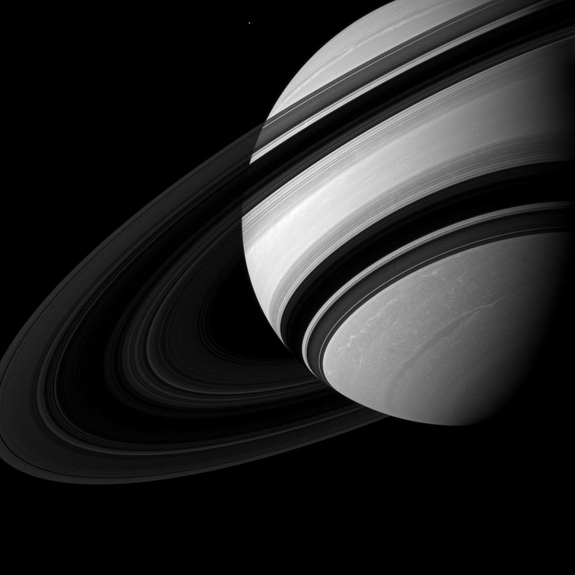How Long is a Day on Saturn?

Okay, maybe this is not a mystery you've pondered much. But the answer is really cool. You'd think this was one of those things astronomers have pinned down to the nanosecond. But in fact, nobody knows, and in reality no answer will ever fully suffice.
A day on Earth is determined by how long it takes the planet to spin once on its axis. That's pretty easy to measure, because Earth's surface is solid. Just sit there for about 24 hours, 3 minutes and 56.55 seconds, on average, and measure the time between two sunrises. (That works today, but eventually we will have more than 24 hours to get this job and others done. A lot more. In a few billion years, a day will last about a month!)
Saturn is a giant ball of gas, however. There is no firm surface anywhere in sight.
Making things more confusing, Saturn has some of the solar system's fasted winds, up to 1,000 mph. So at any given point on the visible "surface" of the clouds, or anywhere down below, rotation speed is different than at any other point. Theory does predict a rocky core, so attempts to determine the rotation rate have used radio waves to peer inside, and the ringed planet's day has long been put at 10 hours, 39 minutes and 24 seconds.
But this estimate is wrong, according to more recent observations by the Ulysses and Cassini spacecraft.
Saturn's day is longer than 10 hours and 47 minutes, says William Kurth at the University of Iowa. Saturn hasn't slowed down, Kurth says. Rather, there is an unknown shift between the planet's rocky core and it's outer magnetic field that is creating confusion in the readings. "Given that, we currently do not know what the rotation period of Saturn’s deep interior is."
Follow Life's Little Mysteries on Twitter @llmysteries. We're also on Facebook & Google+.
Sign up for the Live Science daily newsletter now
Get the world’s most fascinating discoveries delivered straight to your inbox.
Robert is an independent health and science journalist and writer based in Phoenix, Arizona. He is a former editor-in-chief of Live Science with over 20 years of experience as a reporter and editor. He has worked on websites such as Space.com and Tom's Guide, and is a contributor on Medium, covering how we age and how to optimize the mind and body through time. He has a journalism degree from Humboldt State University in California.











